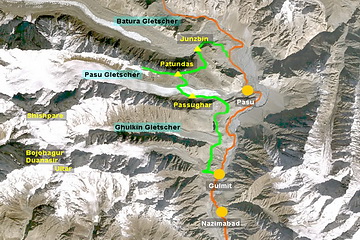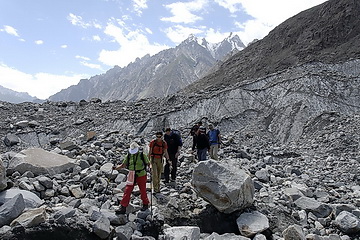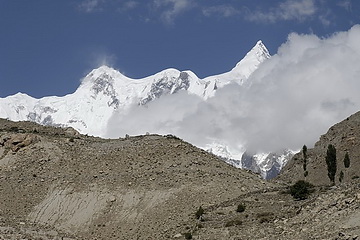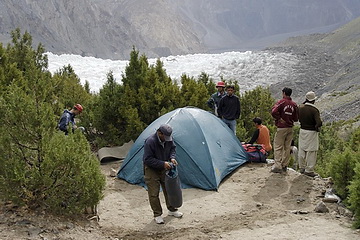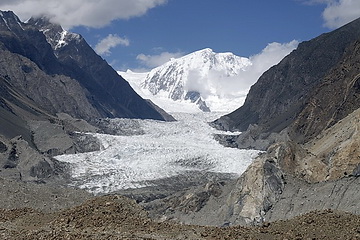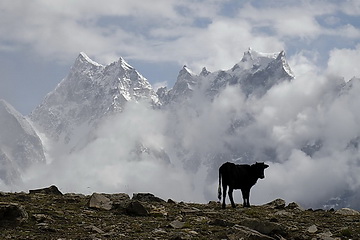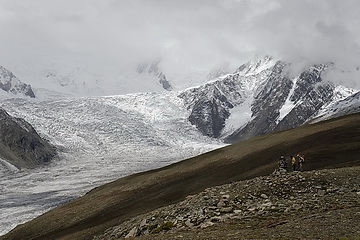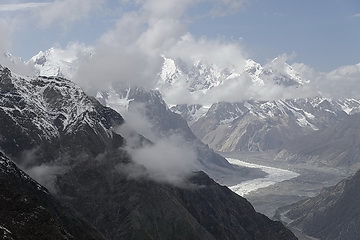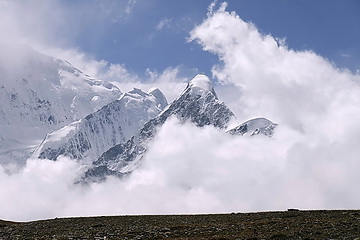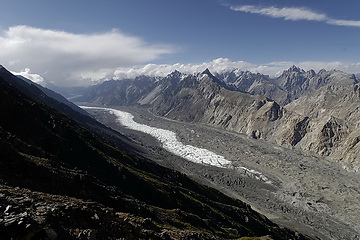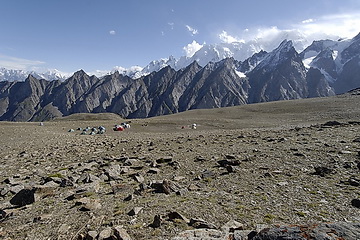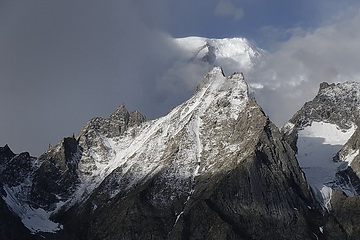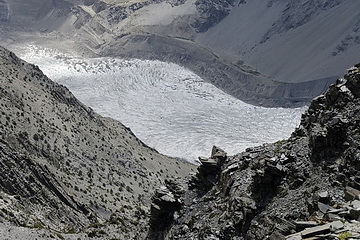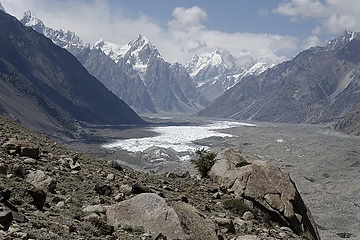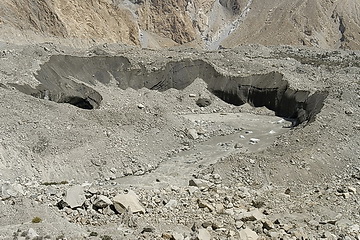Patundasrücken und Baturagletscher
Der Patundasrücken ist ein Lagerplatz der Extraklasse hoch über dem viertlängsten Gletscher des Karakorum. Die Tour führt zunächst vorbei an Ghulkingletscher und Borith See zum Lagerplatz auf der Seitenmoräne des Pasugletschers, welcher am folgenden Tag gequert wird. Nach einem steilen Anstieg über 900 Höhenmeter erreicht man den Patundasrücken zwischen Pasu- und Baturagletscher. Wandert man den Rücken entlang, ergeben sich immer wieder faszinierende Ausblicke, wenn das Wetter mitspielt. Über steile und teilweise ausgesetzte Hänge mit Schiefergeröll geht es dann wieder hinab nach Junzbin (2900 m), unserem letzten Zeltlager, von wo aus man in ca. 2 Stunden den Karakorum Highway ereicht.
The Patundas Ridge is a very special campsite high above the fourth longest glacier of the Karakoram Range. On the first part of the hike we passed Ghulkin Glacier and Borith Lake and erceted the camp on the moraine of the Pasu Glacier which we traversed the next day. After a steep ascent of about 900 m we reached the Patundas Ridge, an excellent panorama place between Pasu- and Batura Glacier. A walk along the ridge to a panorama point at 4300 m turned out to be a foggy experience but should be very impressive on clear days. Across steep and partly exposed slopes of slate debris we descended to Junzbin (2900) our last campsite from where the Karakoram Highway can be reached in another 2 hours.
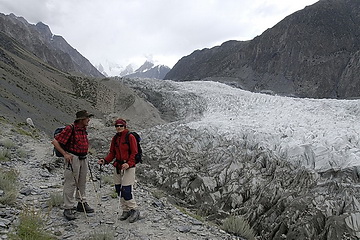

Die nächste Etappe führte uns zunächst auf das schuttbedeckte Eis des Pasugletschers. Die Querung des etwa 1 km breiten Pasugletschers ist ohne Steigeisen stellenweise mühsam.
On the next morning the first thing to do was to cross the debris-covered Pasu Glacier. Parts of the 1 km crossing of the Pasu Glacier are quite arduous to go without crampons.

Der abgeflachte Patundasrücken geht fast unvermittelt in bizarre Eisgipfel über, von r.n.l.: Hiriz (5500m), Darmyani Peak (6095m), Noukarsich (6498m) und der Passu East (6842m) im Hintergrund.
The flat ridge of Patundas is changing abruptely into namless ice peaks: from right to left.: Hiriz (5500m), Darmyani Peak (6095m), Noukarsich (6498m) und Passu East (6842m) in the background.
Borchers Peak (6305 m), ein formschöner Gipfel über dem Pasugletscher . Die Schneegrenze liegt hier bei rund 4700 m Höhe.Borchers Peak (6305 m) above the Pasu Glacier. The snow-line in this area is at about 4700 m.
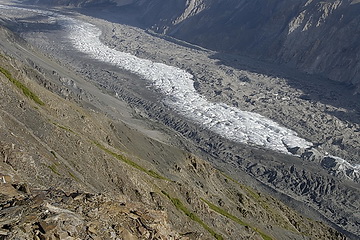

Die Talsohle mit dem Baturagletscher liegt hier etwa 3000 m hoch. Bis zum Karakorum Highway talauswärts sind es noch rund 5 km.Bevor es zum Baturagletscher hinunter geht zeigt sich noch einmal die Pyramide des Shispare (7611m) mit seiner Nordflanke.
The Batura Glacier is situated at an altitude of 3000 m. From there it is still 5 km to go to reach the Karakoram Highway. Before descending to the Batura Glacier we had a quick view of Shispare (7611m) and its north face.
Der Abstieg zum letzten Lager führte zunächst über teilweise ausgesetzte Schieferhänge mit allerdings herrlichen Tiefblicken. Das letzte Wegstück ist dann ohne weitere Schwierigkeiten.
On the descent to our final camp we had to cross slate slopes which were a little bit airy in some parts. Nevertheless we had fascinating views of the glacier below. The final part of the descent is easy.
Vom Ende des Baturagletschers erkennt man im
Nordwesten in den Wolken den Kuk Sar (6935 m). Vor diesem Massiv biegt
das Tal des Batura nach Südwesten und dann wieder nach Nordwesten
ab, wo der Ursprung des Gletschers an den Osthängen des Kampire
Dior (7143 m) liegt. Der 6059 m hohe Gipfel im rechten
Bild ist lediglich eine Erhebung in einem Grat der nach Norden vom
Baturakamm herunter zieht.
View across the Batura Glacier in north-western
direction towards Kuk Sar (6935 m - partly in clouds) where the glacier
turns left and has its origin at the eastern slopes of Kampire Dior
(7143 m). The summit in the right picture (6059 m) is just a
part of the ridge that comes down from the Batura Ridge in northern
direction.
Gletschertor des Baturagletschers. Nach Aufbruch aus dem letzten Zeltlager sind es noch sind es einige Kilometer bis zur Strasse.
The mouth of the Batura Glacier. After leaving our final camp we still had some kilometers to go to reach the road.
